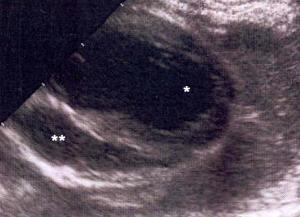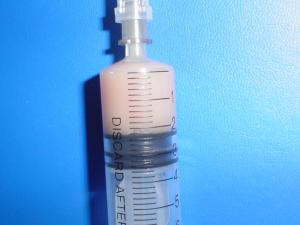Outcome
The cat was treated with amoxicillin-clavulanic acid twice a day. Within 48 hours of starting the antibiotics, the pyrexia had resolved and the cat was eating. The antibiotic therapy was continued for a further 3 weeks. On re-assessment 21 days later the cat showed marked improvement in appetite and activity. Clinically the cat showed weight gain and no pyrexia. The anaemia, band neutrophilia, and hypoalbuminaemia had resolved, and the hyperglobulinaemia had improved. Survey thoracic radiographs were within normal limits and right lateral echocardiography showed resolution of the pericardial effusion. Six weeks after the re-assessment, the owner reported telephonically that the cat was clinically well.




